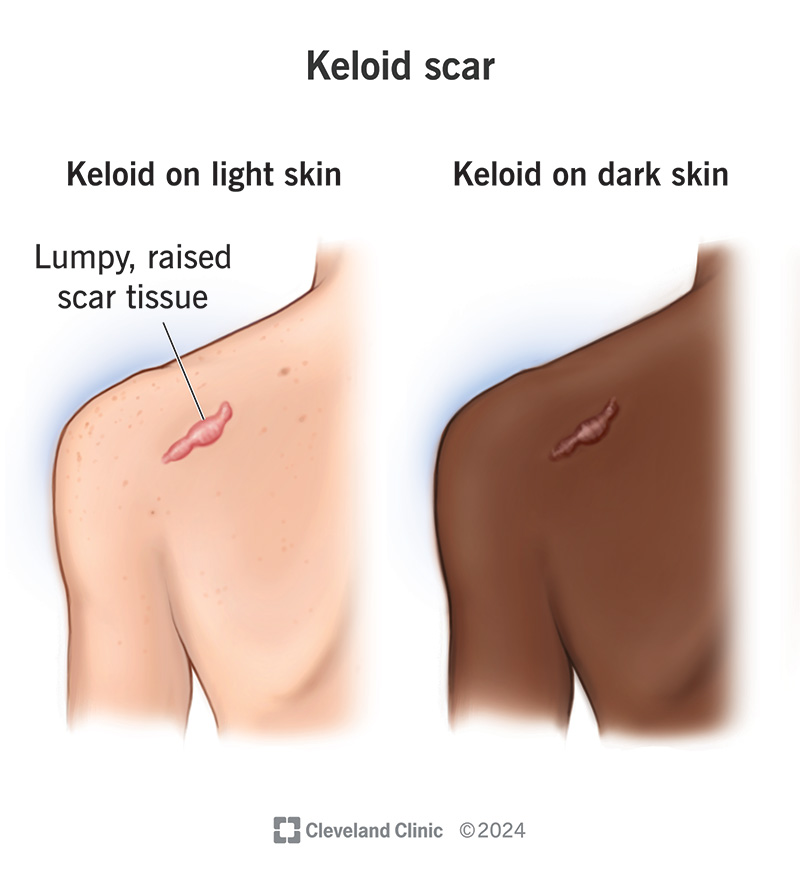Keloid Scars (KS)

Keloid Scars (KS): Causes, Symptoms, Diagnosis, and Management
Keloid Scars (KS) are raised, thickened scars that extend beyond the original wound site, often resulting from an overactive healing response. They can cause discomfort and cosmetic concerns. Below is a detailed overview of keloids, supported by current evidence.
Causes and Risk Factors
Primary Cause:
- Abnormal fibroblast activity: Leads to excessive collagen production and scar tissue growth[2][4].
- Genetic predisposition: Individuals of African, Asian, or Hispanic descent are more prone[1][3].
- Family history: Having relatives with keloids increases risk[1].
- Age: Most common in individuals between 10 and 30 years old[1].
- Skin injuries: Any type of skin damage (e.g., burns, acne, piercings) can trigger keloid formation[3][5].
Symptoms
Keloids are characterized by:
- Raised, firm scars that grow beyond the original wound boundaries[2][7].
- Itching, pain, or burning sensations during growth; these symptoms often resolve once the keloid stabilizes[6][7].
- Irritation from friction or clothing[3].
- Color: Initially pink or red, often darkening over time[1][3].
Diagnosis
Clinical Examination:
- Visual inspection: Keloids are identified by their raised appearance and extension beyond the wound site[2][7].
- Medical history: Review of past skin injuries or surgeries[5].
- May be performed to rule out other conditions like nodular scleroderma[1].
Treatment
Non-Surgical Options:
- Corticosteroid injections: Reduce inflammation and size[2].
- Silicone gel or sheeting: Apply pressure to flatten the keloid[2].
- Laser therapy: Targets redness and reduces size[2].
Surgical Options:
- Excision: Often followed by corticosteroid injections to prevent recurrence[2][4].
- Cryotherapy: Freezing the keloid to reduce its size[2].
Prevention
- Avoid skin injuries: Minimize risk factors like tight braids or piercings[1].
- Early treatment: Addressing skin injuries promptly may reduce keloid formation risk[3].
Conclusion
Keloids are challenging to treat due to their tendency to recur, but various therapies can improve their appearance. Understanding risk factors and early intervention are crucial for managing keloids effectively.
Consult with Our Team of Experts Now!
At DrStemCellsThailand (DRSCT)‘s Anti-Aging and Regenerative Medicine Center of Thailand, we emphasize comprehensive evaluations and personalized treatment plans of Cellular Therapy and Stem Cells for managing various health conditions. If you have questions about Keloid or would like more information on our services, consult with our experts today!
Consult with Our Team of Experts Now!
References















